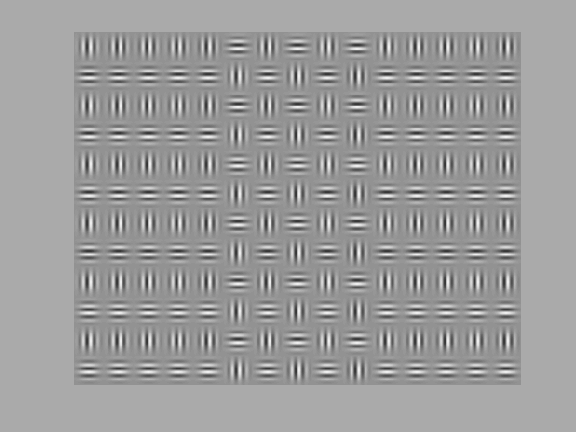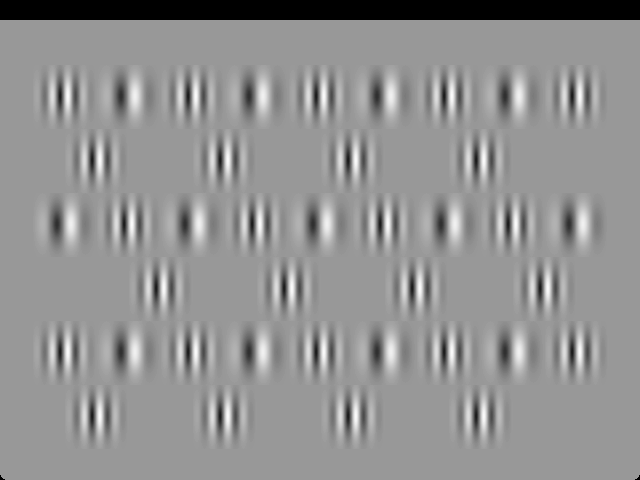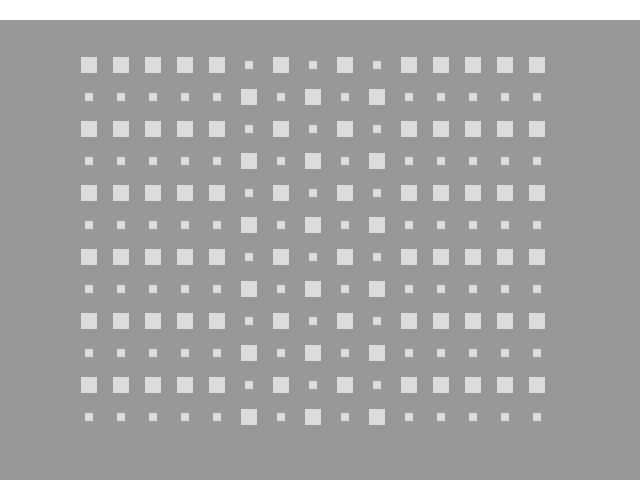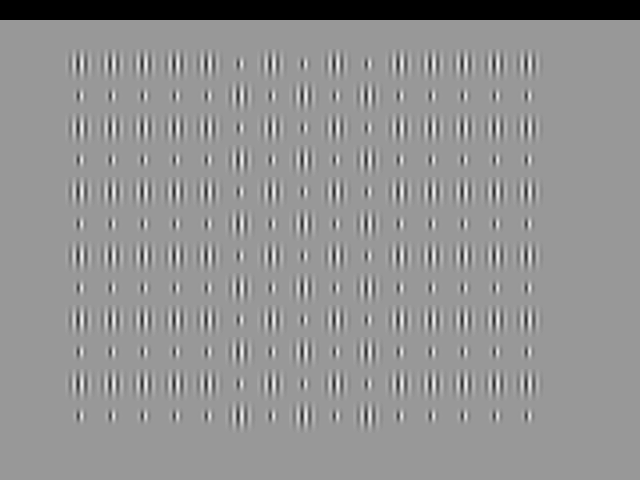

This pattern also used in demonstration of how complex channels respond.
Task: Are the downward-and-to-the-right paths more salient than the downward-and-to-the-left paths?
(Ignore the black bar at the top of the pattern - it does not occur in the experimental stimuli.)

Return to bandwidth question on Complex Channels page
With square-element patterns, approximately linear spatial summation is seen (the tradeoff between area and contrast is approximately linear).

The nonlinear spatial summation that is seen between area and contrast (nonlinear tradeoff between area and contrast) in patterns with gratings elements (example below) can be explained by an intermediate nonlinearity in complex channels that is a (rectified) power function with an exponent of 3 or 4.
(Ignore the black bar at the top of the pattern - it does not occur in the experimental stimuli.)

Return to area-contrast tradeoff experiments (in question about intermediate nonlinearity) on Complex Channels page